Part 2 - Escape from Italian Prison Camps
Chapter 6 - The Adelboden "Camp"
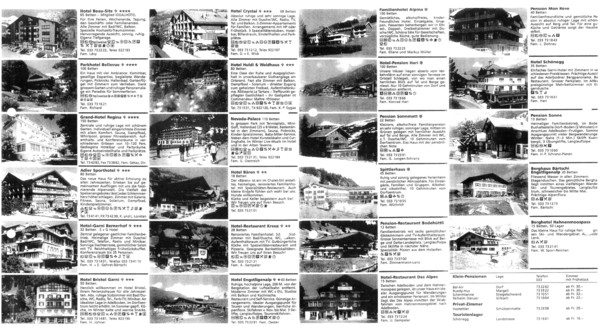
POW "Camps" to which Australians were assigned after their arrival in Switzerland were not the type most Australian POW had come to expect. There were no barbed-wire compounds as such, more akin to the temporary accommodation of Italian working camps, from which POW were marched to work in the mornings and marched back again in the evenings after mixing with the local civilians. But the Swiss "camps" themselves were not work places but initially schools, gymnasiums, small hotels in which POW were accommodated and fed, under their own administration but supervised by members of the Swiss army, in a most unobtrusive fashion, with no marching parties to draw attention to a military presence.
The "camp" rules were laid down covering curfew, places off limits, and the general boundaries defined. Within these rules, POW could move freely and mix with the civilian locals. Leave passes could be applied for to visit other "camps" to visit mates and these were easily obtained. Individuals were issued with Swiss Identity Cards to facilitate movement in civilian clothes or British uniform. In accord with the Hague Conventions, "evades" were considered "free men".
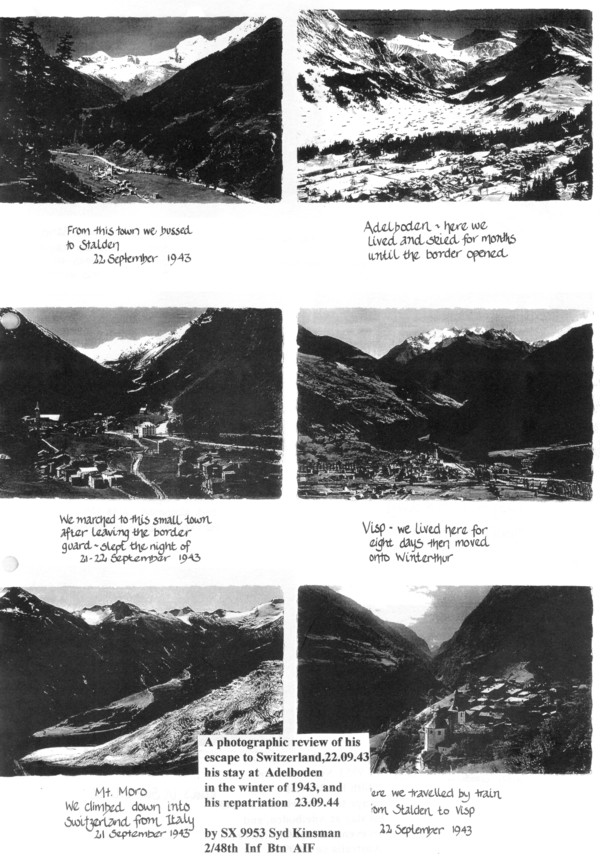
On arrival in Switzerland every POW officer "evade'" was given an initial payment of 25 Swiss francs, and other ranks received 15 Swiss francs.
Weekly payments thereafter were:
Majors and above SF 20
Below Major SF 15
Warrant Officers SF 12
N.C.O's SF 10
Men SF 8
The exchange rate in 1943 was 17.5 Swiss Francs to the pound sterling.
Payments were debited against individual paybooks.
Officers were paid a 650 SF clothing allowance and 36 SF a week in addition to their weekly living allowance. This was sufficient to allow them to buy a new uniform and to pay to live in a small private "pension" or small hotel They were permitted to wear civilian clothes if they so wished, a privilege later extended to all ranks.
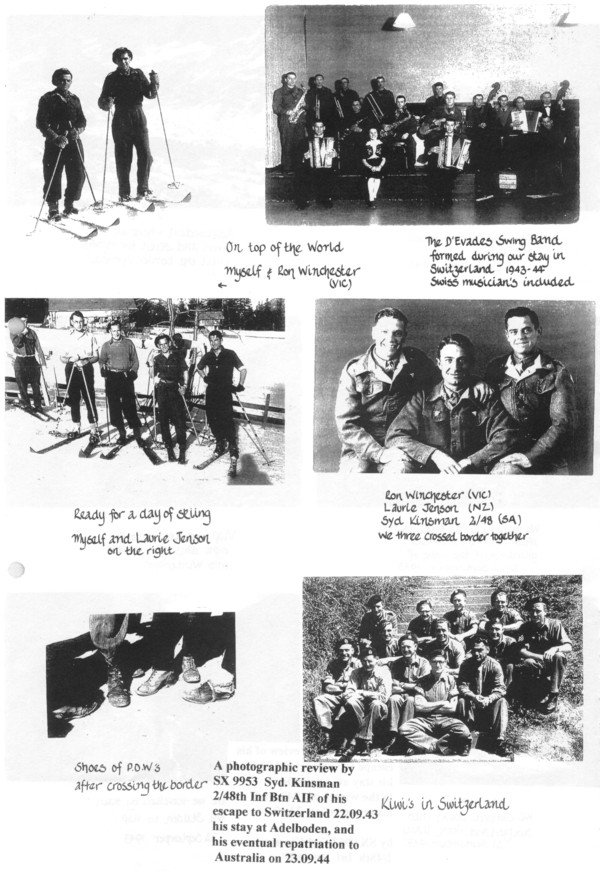
"Camps" in Switzerland were classified according to the nationality and status of prisoners. In general, the Swiss divided their country into "Secteurs" aggregating various nationalities together - Italians, Germans, British, French, Yugoslavs, etc.
Generally speaking, East Switzerland was allotted to Allied personnel, although the Swiss followed humane guide lines as much as they could, British troops such as Gurkhas and Indians were sent to the Tessin in the South because of the relatively "warm" climate there.
The status of those seeking sanctuary in Switzerland was divided into 3 main groups:
1. "Evades" - military personnel reaching Switzerland in civilian clothes who could prove their military identity.
2. "Internierten" - those who reached Switzerland in uniform and armed e.g. Airmen landing in uniform and in their aircraft.
3. "Fluchtlings" - civilian refugees.
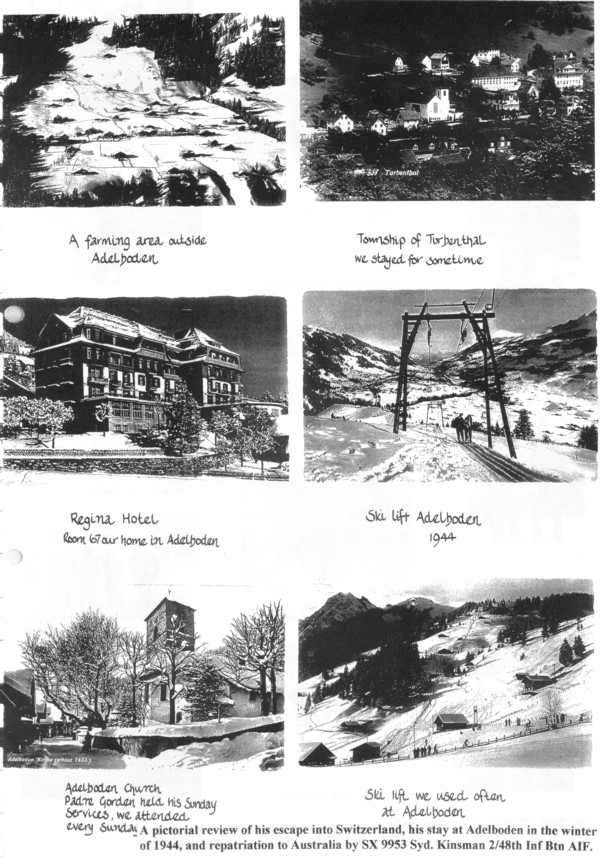
There was an internment "camp" for Greeks at Prahins (Vaud). One for French military "evades" at Lutisburg and a "Fluctingslager" at Aldswil.
Australians were assigned to "camps" in Adelboden, Arosa, Burglen, Davos, Dergsheim, Elgg, Gondo, Glion, Heiden, Turbental, Wil and Wald. As some of these camps were closed down, new ones were opened or existing ones enlarged. "Secteur" boundaries were also adjusted from time to time.
The Swiss were continually adjusting their accommodation centres the better to handle the growing stream of uninvited guests into their country, and with the signing of the Armistice in Italy, braced themselves for a further influx of temporary visitors.
Steps were taken to overhaul the availability of barrack and other accommodation. The authorities had estimated that 40,000 refugees would come in from the mountain areas of Italy and indeed by the end of 1943, 39,712 entries had been registered.
By mid-September, the rate averaged 1,000 per day. On the day the Italian Armistice was promulgated, 11,914 entrants had been registered. 10 days later on September 20, 1943 this figure had reached 26,985 and by September 30, 1943, the total had climbed to 33,792. The small number of Australians included in these figures may be seen from the Australian "Flood" statistics (See Chapter "Christmas in the Snow').
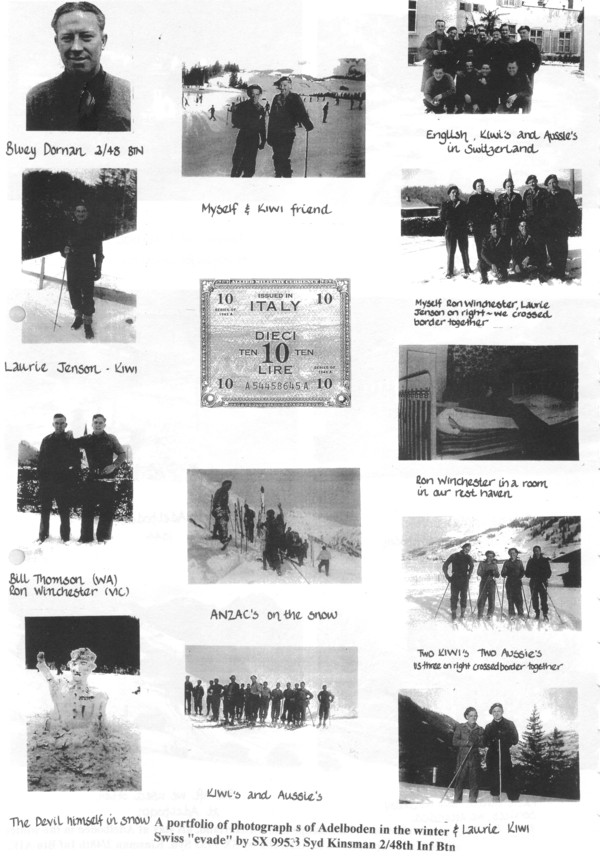
The Allied landings in Normandy in June 1944 made the Swiss re-shuffle their "camps" yet again. From July 1, 1944 to December 3, 1944, some 414 "camps" had been evacuated and 354 new camps opened (A5 p120).
The Australian camp at Heiden close to the German border was one, its inmates returning to the main British camp at Wald.
As more and more airmen, from both sides and for many reasons, landed on Swiss soil, the number of "internees'' rapidly increased. A brilliant solution to creating "camps" for airmen was to utilise the winter resorts, with their big and empty hotels. The first "internment" camp for American airmen was established at Adelboden in the almost inacessible mountains.
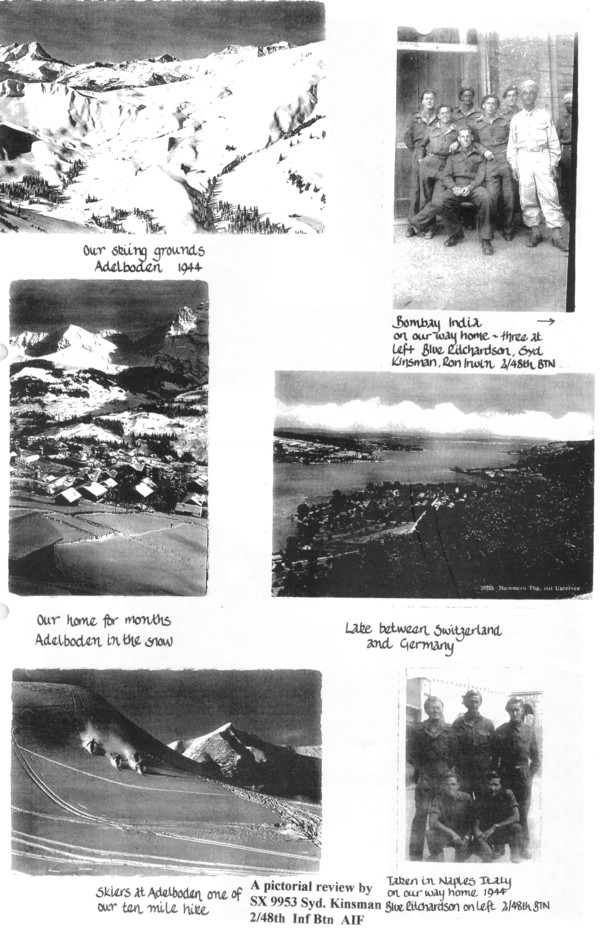
Because all these airmen were officers or senior NCOs, by agreement with the US Legation in Bern, they were interned in superior hotel accommodation in Adelboden.
Switzerland is a small country, but it has a huge humanitarian heart. While many other Europeans criticise it for its egality and efficiency which leads to some dullness, its strong pragmatic streak has equated dullness with sympathy and care.
Although the Swiss Government had prepared itself for receiving more and more refugees as the fighting in Italy grew closer to its borders, they were still not quite prepared for the sudden influx of military escapees that followed the signing of the Armistice between the Italian General Badoglio and the Allied armies in Italy. Nor did they expect the large numbers of deserters and refugees from Italy that was a consequence of the decision by the German High Command to fight on in Italy so doggedly and for so long.
While new military style internment camps had been constructed, their capacity was inadequate to cope with the demand for accommodation and services. Moreover, the escalation of aerial warfare saw many airmen, from both sides, land on Swiss territory. These arrived in full fighting trim, in uniform and frequently with their aircraft intact. They mainly held commissioned rank and required superior lodgement and treatment. They were almost invariably members of the USAAF.
One brilliant solution to an immediately pressing accomodation problem, was to utilise the tourist facilities which were lying idle and empty in such famous winter sports centres as Davos, Arosa and Adelboden. Such resorts were geared to handle the hundreds and thousands of relatively short term visitors coming into Switzerland for their winter sports holidays. These resorts had the basic infracture and services with many large hotels with extensive kitchen facilities, and a wide range of accommodation ranging from economy to super-deluxe.
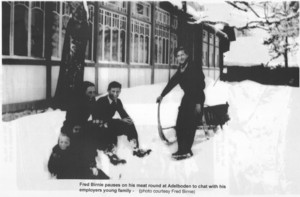
Moreover as many of them were in relatively remote valleys, surrounded by impassable mountains, it was very easy to isolate them from the rest of Switzerland by controlling the entrance to the entire valley with a single guard house, manned by relatively few Swiss guards.
A classic example was the ski resort of Adelboden, high up in a valley of the Bernese Alps, and in winter, only accessible through the hamlet of Frutigen at the entrance to the valley. The village of Adelboden consisted mainly of very large tourist hotels of varous grades, and private Swiss ski-chalets, scattered around a small local community, the main core of guides, instructors and service personnel. The economy of Adelboden rested largely on the tourist trade, and that due to the war was then almost non-existent.
Soon after most of the Australian and New Zealand escapees had been settled down in smaller makeshift "camps" in schools, disused factories, halls and small hotels, a notice appeared offering their inmates a chance to learn skiing and other winter sports in Adelboden and calling for volunteers to be trained in these skills as permanent staff. Adelboden was already a permanent internment camp for the ever-increasing number of American airmen who had crash-landed in their Flying Fortresses, either crippled in combat, run out of fuel, or lost their way.
The Recorder remembers being billetted in a school hall in the small village of Turbental, with a day job as chainman to a Swiss surveyor working in that area. But having been a member of the Australian Ski Patrol formed at the Cedars in Lebanon to patrol the border between that country and Turkey, he landed a ski instructor's job in Adelboden almost immediately. Given the temporary rank of Sergeant by the British Officer in Command, a room to himself in the Beau Site Hotel, and a free pass on the ski-lift system, things were definitely looking up. In addition, many regular pre-war visitors to Adelboden used the storeroom of the hotel to leave their gear until the next season started. This gear was sequestrated and distributed and one sergeant emerged particularly well equipped for the rigours of the ski slopes. Soon reaching Swiss Silver Medal standard, and with Adelboden rapidly being developed as a Rest and Recreation area for "evades" from other camps, he soon made many friends among the Americans, many of whom had breakfasted in England in the morning and ended up as" internees" in Adelboden that same afternoon.
As they were able to draw their full pay and enjoyed excellent canteen facilities in their deluxe hotels, they had a head start on the rest of us when it came to fraternising with the local population, particularly the young Swiss ladies who flocked to Adelboden in the weekends. However having discarded Italian for German as a preferred second language, these advantages were easily offset, particularly through meeting the son of a marvellous Swiss family who owned their own winter chalet on the slopes, and in which they were spending their holidays. This chance meeting lead to many other very interesting experiences in Switzerland, but for the moment it was running ski schools during the day, and sleeping soundly after a good meal at night.
Fraternisation with the locals was never discouraged by the Swiss authorities, and this was facilitated by their permission for both "internees" and "evades" to wear civilian clothes. The practice of civilian clothes being universally worn became more and more common-place diminishing differences in rank and even nationality.
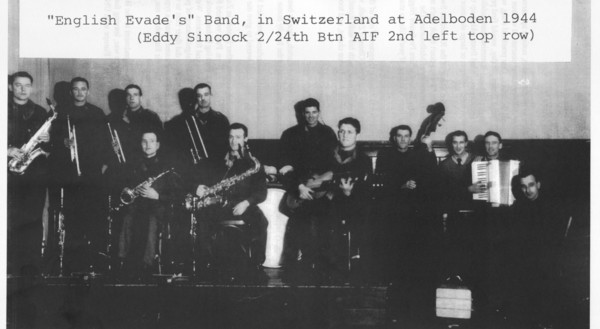
At first the British Officers in charge of internal discipline in the hotels containing billetted British ORs demanded that they be saluted, which was met with much derision by the Australians, who were never known for their liking of the salute in any case, even to their own officers. As the salute is to rank and uniform, it grew ludicrous when one party was in "civvies" and grew completely unnecessary when both parties were in civilian clothes. It soon vanished in Adelboden insofaras the Australians were concerned. However, they were exclusively "evades", whereas the Americans were "internees" and problems associated with saluting Swiss officers required the personal attention of Brigadier General B.R. Legge U.S.A. Military Attache at the Legation of the United States of America in Bern.
Adelboden remained a major Rest and Recreation Camp throughout the Spring and Summer. Many Australians remained on the permanent staff, and were actually repatriated from there to join the flood of evades who left Switzerland in September, 1944.
When the border at Geneva was opened by the American Fifth Army, many of the American airmen in Adelboden tried to "border-hop" (see the story of Fred Birnie, 2/32nd Infantry Battalion).